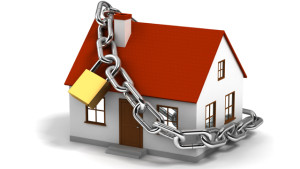
The home security industry makes a fortune on selling us the latest and greatest technologies to keep our homes and belongings safe (or at least “safer”). If you think I am going to take a shot at them for this, you’re wrong. They are worth every dime you spend with them, especially when the systems are monitored. Surprised with my response? You shouldn’t be, but read on.
Where I think we as individuals and consumers fall short is that we think all the safety we put into our homes equals overall safety. For every home invasion or even burglary you hear about on the news, how many street assaults, how many rapes, how many road rage incidents, and how many workplace violence cases do you hear about in comparison? Probably most are along the lines of the latter.
I am all for home safety, but I am even more for PERSONAL SAFETY, regardless of where you are. But when we venture outside of our homes to shop, to travel, to work, to play, where are the cameras and the alarms? Where is the remote viewing features touted by smart phone technologies? Where is the voice of the monitoring system asking us if we’re OK? These are nowhere to be found, so what should that be telling us? Our greatest vulnerabilities are OUTSIDE our homes, not really inside our homes. So what have you done, what time and money has been invested to keep you safer in these more vulnerably environments and situations? My guess is “very little”.
I have always advocated for people (male and female alike) to invest at least six months to a year of true “hand-to-hand” training, not necessarily sport/fight training, but training that speaks to the dynamics of the street where surprise attacks, multiple/simultaneous attackers, improvised weapons, etc. can (and often do) come into play. After all, the one thing you always have “with you” is YOU!
Some may choose to enhance some of these strategies with various weapons or devices due to their age, physical considerations or other. I understand this completely, but weapons should always be a second-line of defense, not necessarily a first. The problem with too much reliance upon weapons becomes (1) what happens if you cannot access the weapon? (2) what happens if the weapon does not work as it should? (3) what if your attacker actually takes control of the weapon instead of you? And yet another (legal) consideration is that there is a force continuum that must be considered, meaning you are not always justified in the use of a weapon, especially one with deadly force. You need to understand your options and responsibilities.
I simply mention the above as food-for-thought. Your personal safety is “YOUR” personal safety, choose as you will. The only point I am trying to make is that for all the time and money we spend in our home security, we should at least invest the same (if not more) amount of time and money learning to navigate the world outside of our homes where most violent acts occur. And a final word of advice, don’t just make a “Plan A”, but a “Plan B” and “Plan C” as well.
Jeff McKissack, Founder
Trouble Spotters